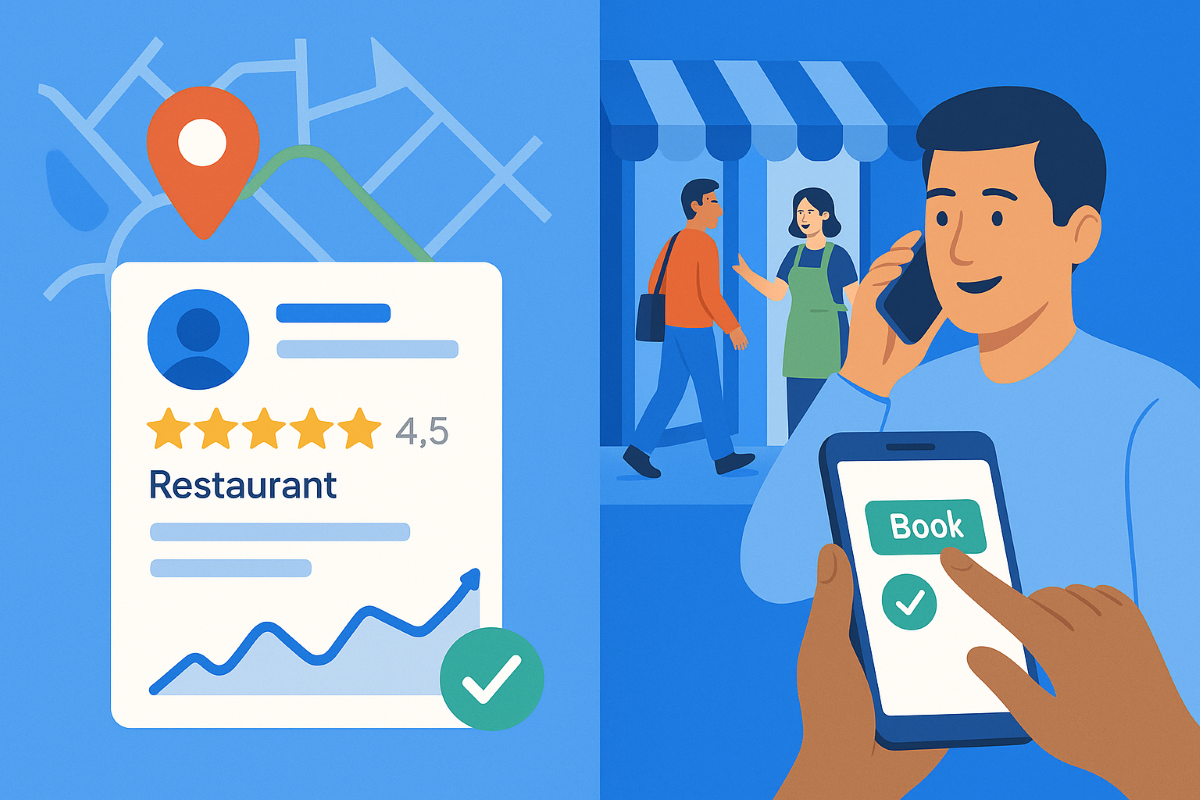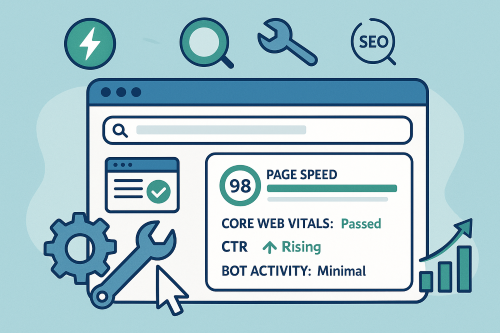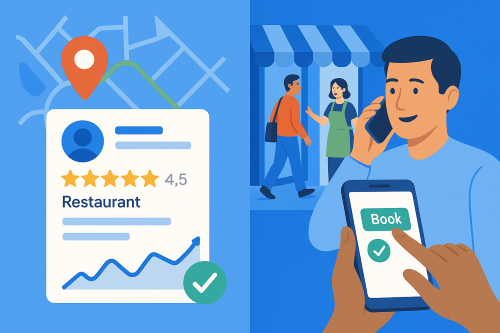You ranked on page one. Awesome. But are you getting more phone calls? Store visits? Bookings?
That’s the gap a lot of local SEO strategies miss. Rankings are great for visibility, but local SEO success depends on what happens after someone finds you.
This guide breaks down how to measure success in local SEO campaigns with KPIs that actually matter to your bottom line. Traffic, actions, and conversions.
Let’s make your local SEO strategy performance driven, not just position focused.

What does local SEO success really mean?
Before you track success, define it. Local SEO is not just about getting seen. It is about getting chosen.
Local SEO success means:
- You show up when customers are ready to act
- You convert local searches into real-world actions like calls, visits, and bookings
- You improve visibility and drive measurable growth
That’s the difference between vanity metrics and business metrics.
Key metrics for local SEO success (beyond rankings)
Here’s where you shift your focus. From where you show up to what happens next.
1. Website traffic from local searches
Use Google Search Console and Google Analytics to track:
- Organic traffic from location-based queries
- Branded versus nonbranded keyword traffic
- Mobile versus desktop traffic (local usually leans mobile)
Pro tip: Set up location-specific UTM tags if you have multiple storefronts.
2. Click-through rate (CTR) from map and local pack results
Your local CTR shows if your listing stands out. It depends on:
- Reviews and star ratings
- Business name consistency
- Strong meta titles and descriptions
- Use of keywords in your Google Business Profile
CTR improvements mean better engagement even if rankings hold steady. If your local listing is visible but not getting clicks, you may need to look into techniques like local SEO CTR manipulation to increase engagement and signal relevance to search engines. Just be sure you’re using ethical methods that reflect real user interest.
3. Google Business Profile interactions
Your Google Business Profile is your storefront. Track:
- Clicks to call
- Website visits
- Driving directions
- Bookings (if enabled)
Google’s Insights section gives you these engagement metrics.
4. Phone call volume
Set up call tracking using Google Call History, CallRail, or similar tools to measure:
- Total call volume
- Call duration (to filter spam and low intent calls)
- Peak call times (to optimize staffing and hours)
Bonus metric: Track first-time callers to measure new lead generation.
5. Direction requests and in-person visits
If you're a brick and mortar business, direction requests can be a strong proxy for foot traffic.
Track this using:
- Google Business Profile data
- In-store surveys (ask “How did you hear about us?”)
- Wi-Fi or location analytics tools
6. Online bookings and form submissions
This is where intent becomes action. Measure:
- Completed bookings (for services)
- Form submissions (for inquiries or consultations)
- Newsletter signups (if part of your sales funnel)
Set up goals in Google Analytics or GA4 to track these as conversions.
7. Reviews and reputation growth
Your star rating is both a ranking factor and a conversion driver.
Track:
- Number of new reviews
- Average star rating
- Review sentiment and keywords
Encourage happy customers to leave reviews on Google, Yelp, and other relevant platforms.
How to measure success in local SEO campaigns
You’ve got the KPIs. Now turn them into part of your strategy.
Build a local SEO dashboard
Use tools like:
- Google Looker Studio
- SearchSEO performance tracker
- Call tracking integrations
- Google Business Profile Insights
Centralize your data so you can act on it.
Set goals tied to business outcomes
Rankings are good, but goals like “increase bookings by 20 percent in 3 months” drive better decisions.
Set goals around:
- Qualified leads
- In-store visits
- Revenue growth
Review performance monthly
Local search changes fast. Keep tabs on performance:
- Monthly to catch changes early
- Quarterly for broader trends
- Seasonally for industry behaviors
Rankings still matter but they are not enough
Yes, rankings help you get seen. But local SEO success metrics that really matter are those tied to customer action.
Track the whole journey. From search results to your calendar.
3 common local SEO success mistakes and how to avoid them
1. Only tracking keyword rankings
Fix: Add data on calls, visits, and conversions for a full view.
2. Ignoring Google Business Profile engagement
Fix: Update your profile regularly. Keep your hours, photos, and reviews fresh.
3. No call tracking setup
Fix: Use dynamic phone numbers and attribution tools to connect calls to campaigns.
Connect real actions to real growth
Getting ranked is just the beginning. True local SEO success is about what happens after that first impression—phone calls, bookings, store visits, and reputation growth.
But there’s a catch. Not all traffic is equal.
Some of it comes from automated traffic bots, especially on your Google Business Profile. Try SearchSEO today and drive organic traffic to your local business with insights that go beyond the basics.


.svg)

.svg)
%201.png)








.svg)